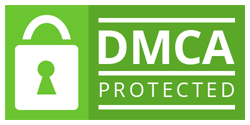What is Deep Fake – Friends, today you are going to go over What is deep fake So like hardly many people have any knowledge about it at all but if you want to know what is this deep fake, then first of all you will have to read this post completely, only then you will be able to understand that ultimately.
First of all, let me tell you that it is based on technology, which hardly many people know. What kind of technology is this, with the help of which you can easily convert any person present in any video or photo into someone else’s? You can change it to another person, that is, you might have adopted this technology many times but you do not know what this technology is called, then let us know the complete information.
Read more: The Role of Character AI in Transforming Virtual Worlds
What is deep fake? How it works.
People can use Deep Fake to make other people’s masks disappear in people’s photos or videos. People mostly use it in movies, television shows, and to make funny videos, but it also has dangerous effects as it can lead to misinformation or misinformation that some people commonly believe.
History of Deep Fake Technology
Increasing along with the development of compression technologies and machine learning. The first deepfake videos appeared on websites in the months of 2016. when AI programmers applied their models to its use. Subsequently, the rapid development of deepfake technology led to more diverse uses, including films, television shows, videos, and political behavior. However, as deepfake technology has developed, there has been discussion about its dangerous implications.
How is a Deep Fake Made?
Deepfake technology is based on a combination of machine learning and computer vision techniques. This technique is used to make a person’s face look like that of another person.
The process of creating a deep fake video usually involves the following steps:
- Data Collection: The person impersonating creates a personal data set by using videos, images, and other media of the person to collect information about them.
- Model Training: The deep learning model is fed with the data, and it learns to mimic the person’s face and facial movements.
- Video Generation: Applying the trained model to a source video, typically of an impersonated person, and manipulating it to match the face and movements of the target person generates deepfake videos.
- Fine-Tuning and Refinement: Some fine-tuning and refinement may be required to improve the realism of the generated deepfake video and reduce any inaccuracies.
- Overall, deepfake technology can be very powerful and can have both malicious and benign purposes. However, it is important to be aware of the potential ethical and social impacts of this technology and to use it responsibly.
How to Recognize Deep Fake?
Visual inspection: Many times, deepfake videos contain inaccuracies, such as inconsistencies in facial appearance, shape, views, and details.
Technical Analysis: Some technical tools can help check the accuracy of deepfake videos, such as examining details of individual behavior and descriptions and, similarity of faces and thoughts. Similarity.
Specialized Software: Some specialized software uses various techniques to identify deepfake videos, such as deep learning algorithms, computer vision techniques, and motion analysis.
Expert Evaluation: Deepfake detection is a rapidly growing field and can sometimes require a human expert to accurately identify a deepfake video. This may include close examination of audio, visual, and contextual clues in the video to determine its authenticity.
It is important to note that deepfake technology is constantly advancing, and detecting deepfakes can be a challenge. However, using a combination of these methods, it is possible to identify many deepfake videos.
How to Avoid these?
Here are some steps you can take to protect against Deep Fake:
- Be Skeptical: Always querying videos and images can spread misinformation and fake news. Always be skeptical and double-check the source of any video or image before accepting its content as true.
- Verify Source: When you receive a video or image, verify the source to ensure its authenticity. Reverse image search or check the URL to make sure it is not a fake website.
- Use Deepfake Detection Tools: There are some deepfake detection tools available that use artificial intelligence to identify deepfakes. Consider using these tools to help determine the authenticity of a video or image.
- Spread awareness: Share information about deepfakes with your friends, family, and coworkers to raise awareness of this issue and help others protect themselves.
- Support Law: Advocate for legislation that addresses deepfakes and other forms of digital manipulation. Governments and organizations should work together to set standards for responsible use of deepfake technology.
- Remember, deepfake technology is constantly evolving, so it’s important to stay informed and be proactive in protecting yourself from deepfakes.
Are Deep Fakes always Dangerous?
Deepfakes can have both positive and negative effects. On one hand, people can use deepfake technology for creative and entertainment purposes, such as creating fictional characters or scenes in movies and TV shows. On the other hand, malicious individuals can use deepfakes to spread misinformation, propaganda, and fake news.
For instance, deepfakes can create fake news that manipulates public opinion and undermines trust in government, institutions, and individuals. People can also use them for cyber crimes, such as creating fake videos to defame someone or stealing sensitive information.
Although deepfakes have the potential to be dangerous and harmful, responsible use can also lead to positive and creative outcomes.


